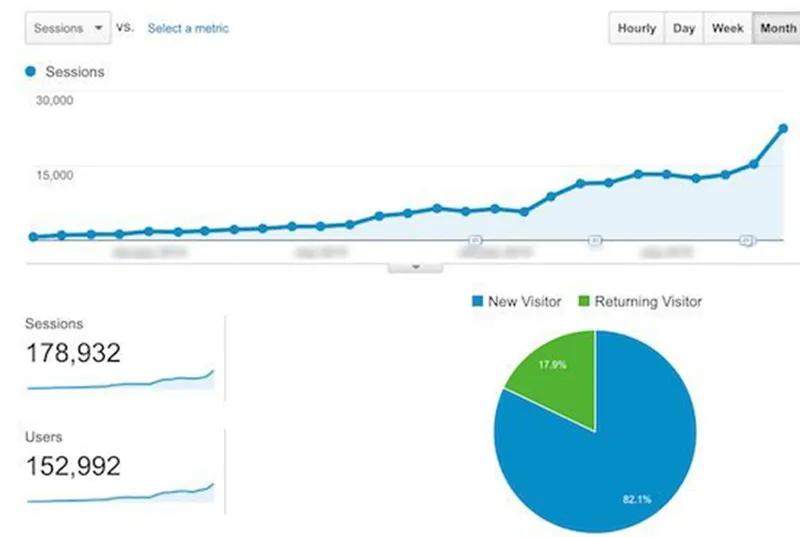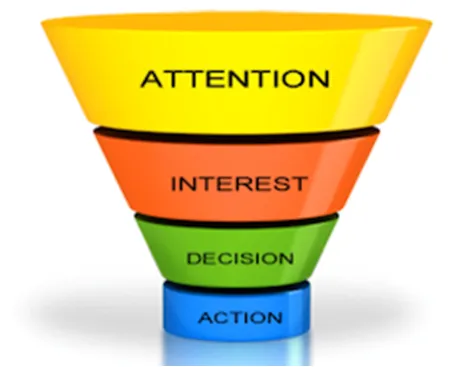Digital marketing traffic strategies: paid vs free traffic
Digital marketing has a lot of components to it. A well-planned digital marketing strategy is like a well-oiled machine which churns out revenue for the business. But the fuel that drives this machine is traffic. There are two types of traffic: free and paid. In this article we will learn which type of traffic is better and why.

Though we call traffic from search engines and social media "free" traffic, it is not really free. Content attracts traffic, but there is a lot of time and energy invested in its creation. And that has its costs.
So the real question here is: where do I invest my digital marketing budget? In creating content that can generate traffic in the long term, in paid advertising channels that generate instant traffic? To find out the answer, we have to dive deep into understanding how traffic is generated in the first place.
Content is the source of all attention (and traffic)
People use the internet for content. This content can be information (education, news, updates etc.) or entertainment (music, movies etc.). If there is no content on the internet, then there is no web traffic generated in the first place.
- A website like Facebook doesn't create its own content, but has created a way for us to share content with friends and family. We log in to Facebook to find out what others are up to and that's also a form of content. We call Facebook a social media channel, but, at the end of the day, it is just a very efficient content curator.
- Google also doesn't create content on its own but organises all the world's information in an intelligent way. The search results page with links to other websites is the content that Google creates. We call Google a search engine, but it is also a content curator.
- Blogs, news websites, and other content channels on the web attract attention from people because they give away good content for free.
Attention is a valuable resource, because it can be converted into interest, then desire, then a decision, and then finally an action (a sale). If you are not yet aware of the ‘AIDA’ model in marketing, read this article that I wrote a while ago.
Buying a house vs renting a house
The two major ways to attract traffic online are similar to renting a house vs buying a house. If you buy a house, you are investing huge money upfront, but there is no need to pay rent every month.
Once the pain of investing money has gone away, you are living in your own home for free for the rest of your life. You are also protected against inflation. And you will never be kicked out of your own house.
However, if you do not have money to invest, you can rent a house, but you will be kicked out the moment you stop paying the rent. Also, you have to pay more over time to adjust for inflation and you have no protection against it. If the house owner asks you to pay 50 percent more at some point, you have to, or else you will be kicked out.
Paid traffic is like renting a house
Depending on paid traffic is very much like renting a house to live in. The moment you stop paying other websites (be it Google, Facebook, or any other website), your traffic stops.
Without traffic, you will have no prospects and no customers. Also, historically, the cost of paid sources of traffic always keeps going up as you have more and more competition. Your margins will become thinner and thinner. You have no protection against such cost inflation.
Building a content asset is like buying a house
Investing in building a content asset is just like investing in a house. Once you have built a good content platform, you will keep getting high-quality traffic for a long time to come. After the content platform is built, it feels like you are getting the traffic for free.
And just like maintaining a house is easy once the initial construction is complete, maintaining a content asset is easy once you have finished building it. You just need to keep publishing good-quality content on a regular basis to keep the momentum going.
For example, a blog — DigitalDeepak.com — took one year to build to a significant level. But after that, all it took was a regular publishing schedule of quality content and since then the traffic has been growing steadily.

You can see in the above graph that the traffic has been growing steadily through the years and will continue to grow as long as I keep publishing content that my followers are interested in. And the momentum adds up to higher returns over time for every piece of content published.
Initially, whenever I published a new article, less than 100 people used to read it, but nowadays I get at least 3,000 readers for every post published.
Should we not invest in paid traffic at all?
I am not advocating that we shouldn't invest money in paid traffic at all. It is OK to invest in paid traffic if you are using it to build your content assets instead of trying to sell directly.
If you try to sell directly using paid traffic, a huge percentage of it will not convert because you have not built a relationship with them and they do not trust you. And this model will not sustain for a long time because your margins will become thinner and at some point, non-existent.
You can use paid traffic to boost your content assets, and then drive sales from it. You can learn how to do it in my integrated digital marketing model. I also recommend that you read my secret to a successful content marketing campaign.
Attention needs to be monetised

Content attracts attention. And creating content costs money. To create more content, one needs to monetise the attention in one way or the other. For example, I create a lot of content on this blog — and I get the attention of people like you who are interested in learning more about digital marketing.
I give away free content and people 'pay' attention. But attention cannot pay my hosting and email marketing server bills. That's why I also sell premium content such as eBooks and courses on my blog. But that's not the only way to monetise people's attention.
Attention makes up the top of the funnel. But it is not always necessary that I need to own the bottom of the funnel as well. Instead of selling my own products, I can ‘rent’ out the attention to people who do not have the top of the funnel (ToFu). For example, a digital marketing training company that sells digital marketing courses can advertise on my website and I can make revenue from the ads.
I hope this article gave you a clear idea about how to approach the biggest challenge in digital marketing — getting traffic. Investment in content assets will always give you a healthy return of traffic in the long term. And when you are investing in paid ads, make sure you use the budget to amplify your content assets for a healthy ROI. Content is the source of all attention and that's why it is a commonly accepted fact that ‘content is king’.
(Disclaimer: The views and opinions expressed in this article are those of the author and do not necessarily reflect the views of YourStory.)







